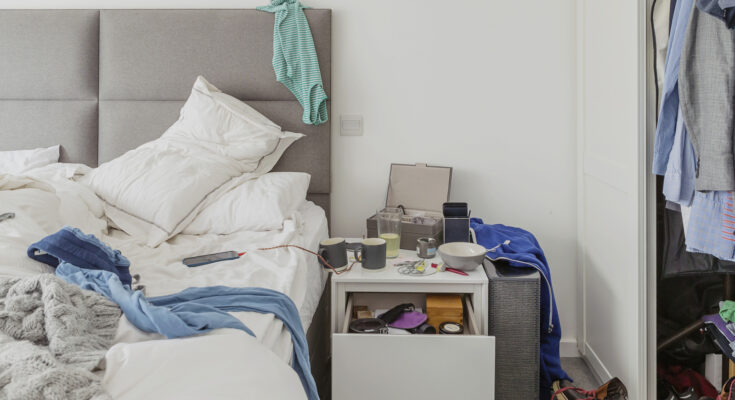The Time Management Tip That Makes Cleaning Quicker And Easier
When your home feels unmanageable, don’t let frustration keep you from getting started with getting it into good shape again. Try cleaning your space in 15-minute bursts. Set a timer on your phone or with an egg timer. Pick an area or task, and work on it for 15 minutes without stopping. There may be endless simple cleaning hacks to keep your home tidy, but this method distills the process down to the bare essentials. You can write out a list of tasks you’d like to accomplish, or simply start the timer and tackle the first mess you see.
Doing timed sessions will help you develop a lasting habit of keeping your home clean and make the entire tidying process more manageable. Just remember: no distractions. Don’t sit down and get caught on your phone or anything else. After the 15 minutes are up, look at what you’ve accomplished so far. You can either stop for the day or repeat the session, followed by a 5-minute break, if desired.
Using this approach aligns with the Pomodoro technique, a proven time management method pioneered by Francisco Cirillo. While his method uses 25 minutes of intense work, the principle remains the same: Short, focused intervals help you establish momentum and progress as you concentrate on just one spot rather than trying to tackle your whole home in one day. It’s more than a trendy productivity hack — it works. Applying it can help make cleaning quicker and easier. Here’s why.
Why 15-minute cleaning bursts work so well
Do you really want to clean for 75 minutes? Chances are, the answer is no. Yet if you do a short, 15-minute cleaning session every weekday, you’ve cleaned for 75 minutes, which is no easy feat. Shorter increments make cleaning feel like less of a chore, even if your home is nothing short of a disaster. Plus, you’ll stay on top of smaller messes during the week, such as the sink of dirty dishes you neglected after work, or the pile of clothes your kids dropped in the hallway after practice.
Focused sessions let you look at the parts instead of the whole. To kick everything into gear, the timer creates a sense of urgency: You race the clock to see what you can accomplish. This intense burst of activity also helps if you have ADHD or trouble staying on task because it isolates the problem to one specific area. It helps reduce the chance of burnout while trying to clean every room in your house.
It’s also a form of single-tasking. Studies show that multitasking can reduce efficiency since your brain needs time to refocus once you switch to a new task. If you’ve ever tried to clean your living room, for example, and found yourself traveling all over the house putting things away, you know how that goes. Next time, put on some music, set a timer, and get to work. You’ll be surprised at how much this little effort can add up to big results.



